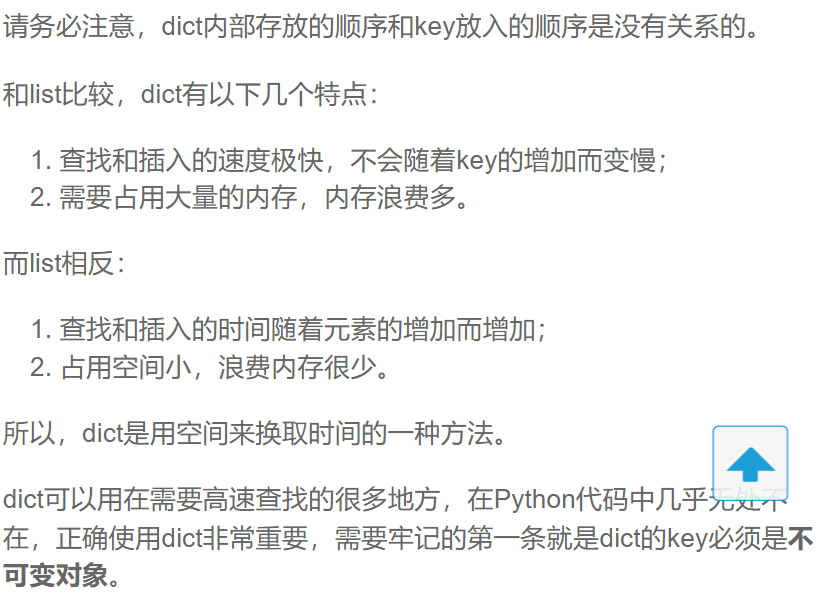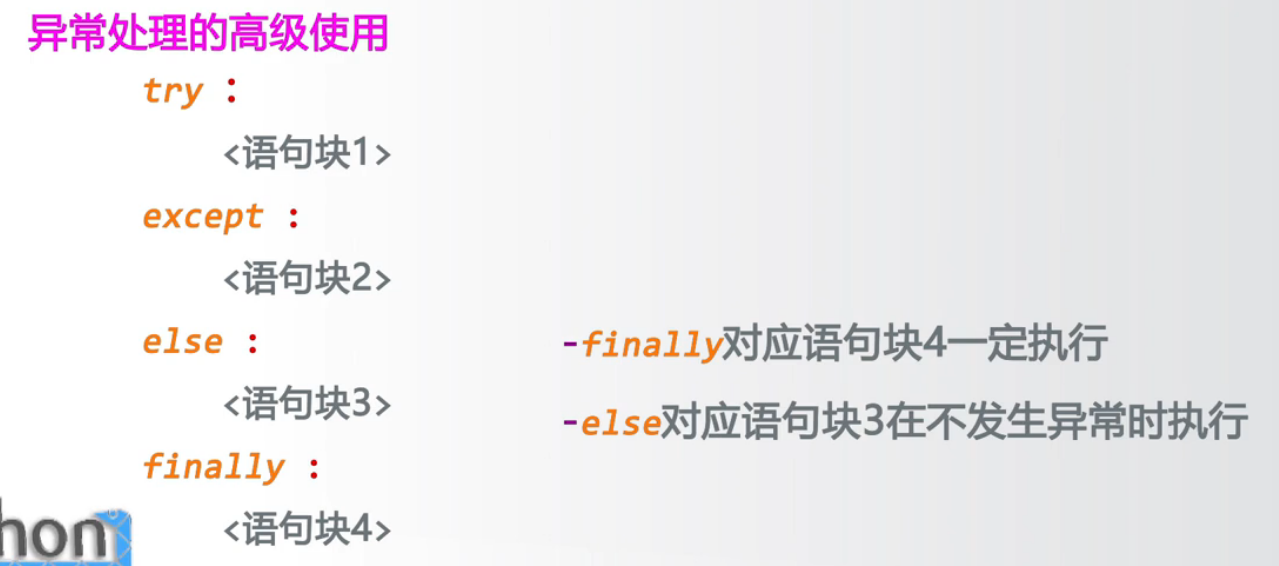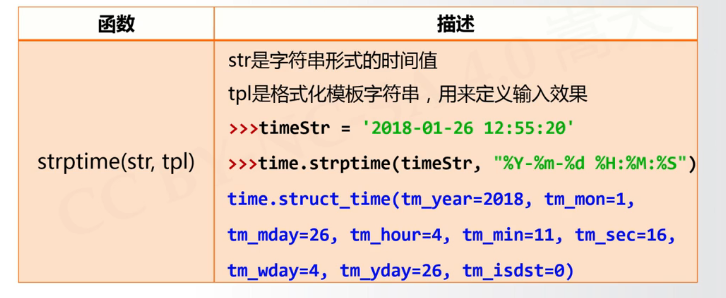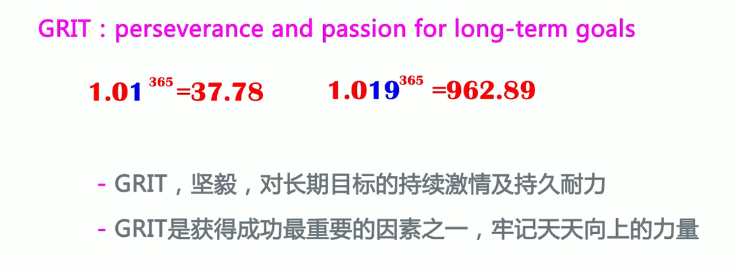学习笔记
1.Python的基本语法
1Python的交互和脚本式
交互式是不创建脚本文件,通过解释器的交互模式来编写代码
脚本式,为创建.py格式进行执行
2标识符
在 Python 里,标识符由字母、数字、下划线组成。
在 Python 中,所有标识符可以包括英文、数字以及下划线(_),但不能以数字开头。
Python 中的标识符是区分大小写的。
以下划线开头的标识符是有特殊意义的。以单下划线开头 _foo 的代表不能直接访问的类属性,需通过类提供的接口进行访问,不能用 from xxx import * 而导入。
Python 可以同一行显示多条语句,方法是用分号 ;
| 运算符 | 描述 |
|---|---|
[] [:] | 下标,切片 |
** | 指数 |
~ + - | 按位取反, 正负号 |
* / % // | 乘,除,模,整除 |
+ - | 加,减 |
>> << | 右移,左移 |
& | 按位与 |
^ | | 按位异或,按位或 |
<= < > >= | 小于等于,小于,大于,大于等于 |
== != | 等于,不等于 |
is is not | 身份运算符 |
in not in | 成员运算符 |
not or and | 逻辑运算符 |
= += -= *= /= %= //= **= &= ` | = ^= >>= <<=` |
3.保留字
| and | exec | not |
|---|---|---|
| assert | finally | or |
| break | for | pass |
| class | from | |
| continue | global | raise |
| def | if | return |
| del | import | try |
| elif | in | while |
| else | is | with |
| except | lambda | yield |
2数据类型
1整数
python可以写任意大的整数
如果出现很大的数比如说10000000可以写成10000_000
2浮点数
浮点数可以用科学计数法来表示
比如说1.23*10七次幂可以写1.23e9, 0.0015等于1.5e-3
数值运算函数
round
round(11.111,2)这个函数是四舍五入round(x[,d])d为保留位数默认为0
// 11.11
abs
abs(x)绝对值
pow
pow(x,y[,z])
幂余
pow(2,3,3)
//2
divmod
商余
divmod(10,3)
//(3,1)
3.字符串
字符串是以单引号或者双引号写出来的
字符串内部中有"或者‘可以通过\来表示
'I\'m \"OK\"!'
I'm "OK"!
str1 = 'hello, world!'
# 通过内置函数len计算字符串的长度
print(len(str1)) # 13
# 获得字符串首字母大写的拷贝
print(str1.capitalize()) # Hello, world!
# 获得字符串每个单词首字母大写的拷贝
print(str1.title()) # Hello, World!
# 获得字符串变大写后的拷贝
print(str1.upper()) # HELLO, WORLD!
# 从字符串中查找子串所在位置
print(str1.find('or')) # 8
print(str1.find('shit')) # -1
# 与find类似但找不到子串时会引发异常
# print(str1.index('or'))
# print(str1.index('shit'))
# 检查字符串是否以指定的字符串开头
print(str1.startswith('He')) # False
print(str1.startswith('hel')) # True
# 检查字符串是否以指定的字符串结尾
print(str1.endswith('!')) # True
# 将字符串以指定的宽度居中并在两侧填充指定的字符
print(str1.center(50, '*'))
# 将字符串以指定的宽度靠右放置左侧填充指定的字符
print(str1.rjust(50, ' '))
str2 = 'abc123456'
# 检查字符串是否由数字构成
print(str2.isdigit()) # False
# 检查字符串是否以字母构成
print(str2.isalpha()) # False
# 检查字符串是否以数字和字母构成
print(str2.isalnum()) # True
str3 = ' jackfrued@126.com '
print(str3)
# 获得字符串修剪左右两侧空格之后的拷贝
print(str3.strip())
字符串函数
find
返回从左边第一个指定的字符索引,找不到返回-1
index
返回从左边第一个字符索引,找不到报错
str = "abcde"
print(str.find('c'))//2
str = "hello world"
a = str.index('w')
print(a)//6
sqlit
字符串的拆分
str = "hello world"
print(str.split(' '))//['hello', 'world']
chr(x) ord(x)

字符串的方法
方法必须用.方式
八种重要字符串的方法
- str.lower str.upper() 返回字符串的副本,全部为大小写
- str.split(sep=None)返回一个列表,由str根据sep被分割的部分组成
"a,b,c".split(",")
# ['a','b','c']
- str.count(sub)返回子串sub在str中中出现个数
"aabbaa",count("a")
# 4
-
str.replace(old,new)返回str的副本,所以old子串被替换为new
“python".replace("n","n123.io") # python123.io
字符串的格式化
python用于槽方式以及format方式
"{}是世界上最好用的语言之一,而{}是效率最高的语言".format("python","c++")

4布尔值
只有两个True和False
布尔值可以tong过and or not表达
>>> True and False
False
>>> False and False
False
>>> 5 > 3 and 3 > 1
True
>>> True or True
True
>>> True or False
True
>>> not False
True
5.空值
用None表示,不能单纯理解为0
6变量
重点
python中
a='abc'
python解释器干了两个事情
- 在内存中创建了‘abc’的字符串
- 在内存中创建a的变量指向‘abc’
7.常量
8.list
list是一种有序的集合,可以进行修改或者删除
classmates=['song','wang','zhang']
使用len可获取list元素的个数
>>> len(classmates)
3
索引 切片[start: end:step]
用索引可以访问list的元素
>>> classmates[0]
'song'
>>> classmates[1]
'wang'
>>> classmates[2]
'zhang'
>>> classmates[3]
Traceback (most recent call last):
File "<stdin>", line 1, in <module>
IndexError: list index out of range
list1 = [1, 3, 5, 7, 100]
print(list1) # [1, 3, 5, 7, 100]
# 乘号表示列表元素的重复
list2 = ['hello'] * 3
print(list2) # ['hello', 'hello', 'hello']
# 计算列表长度(元素个数)
print(len(list1)) # 5
# 下标(索引)运算
print(list1[0]) # 1
print(list1[4]) # 100
# print(list1[5]) # IndexError: list index out of range
print(list1[-1]) # 100
print(list1[-3]) # 5
list1[2] = 300
print(list1) # [1, 3, 300, 7, 100]
# 通过循环用下标遍历列表元素
for index in range(len(list1)):
print(list1[index])
# 通过for循环遍历列表元素
for elem in list1:
print(elem)
# 通过enumerate函数处理列表之后再遍历可以同时获得元素索引和值
for index, elem in enumerate(list1):
print(index, elem)
当然我们也可以通过负数来索引
>>> classmates[-1]
'zhang'
增删
因为list为可变的有序表 append
>>> classmates.append('zhao')
>>> classmates
classmates=['song','wang','zhang','zhao']
元素想插入到指定的位置中.insert
>>> classmates.insert(1, 'Jack')
>>> classmates
>>> classmates.append('zhao')
classmates=['song','jack','wang','zhang','zhao']
删除末尾用 pop()
>>> classmates.pop()
'zhao'
>>> classmates
['song','jack','wang','zhang']
想删除指定的位置用pop(i)
>>> classmates.pop(1)
'Jack'
>>> classmates
['Michael', 'Bob', 'Tracy']
list1 = [1, 3, 5, 7, 100]
# 添加元素
list1.append(200)
list1.insert(1, 400)
# 合并两个列表
# list1.extend([1000, 2000])
list1 += [1000, 2000]
print(list1) # [1, 400, 3, 5, 7, 100, 200, 1000, 2000]
print(len(list1)) # 9
# 先通过成员运算判断元素是否在列表中,如果存在就删除该元素
if 3 in list1:
list1.remove(3)
if 1234 in list1:
list1.remove(1234)
print(list1) # [1, 400, 5, 7, 100, 200, 1000, 2000]
# 从指定的位置删除元素
list1.pop(0)
list1.pop(len(list1) - 1)
print(list1) # [400, 5, 7, 100, 200, 1000]
# 清空列表元素
list1.clear()
print(list1) # []
生成式和生成器
f = [x for x in range(1, 10)]
print(f)
f = [x + y for x in 'ABCDE' for y in '1234567']
print(f)
list中可以有不同类型的甚至list
>>> s = [22141, True, ['asp', 'php'], 'scheme']
>>> len(s)
4
9.tuple
有序的列表叫tuple,tuple不能被修改
不可变的tuple有什么意义?因为tuple不可变,所以代码更安全。如果可能,能用tuple代替list就尽量用tuple。
>>> t = (1, 2)
>>> t
(1, 2)
如果tuple中出现list也是可以修改的
>>> t = ('a', 'b', ['A', 'B'])
>>> t[2][0] = 'X'
>>> t[2][1] = 'Y'
>>> t
('a', 'b', ['X', 'Y'])
10dict(dictionary)
其他的语言叫map
使用key-value
dict实现,只需要一个“名字”-“成绩”的对照表,直接根据名字查找成绩,无论这个表有多大,查找速度都不会变慢。用Python写一个dict如下:
>>> d = {'Michael': 95, 'Bob': 75, 'Tracy': 85}
>>> d['Michael']
95
必须要有key才能读取value
一个key只能有一个value
key不存在报错
如果想删除只要删除key就可以了

11.set
set和dict类型
是存放key的但是不存放value key不能重复
set具有数学上的set性质
比如无序,没有重复元素
>>> s = set([1, 2, 3])
>>> s
{1, 2, 3}
>>> s.add(4)
>>> s
{1, 2, 3, 4}
>>> s.add(4)
>>> s
{1, 2, 3, 4}
>>> s.remove(4)
>>> s
{1, 2, 3}
3.基本函数
1.判断
和c语言基本相似
注意不要少写了冒号
age = 3
if age >= 18:
print('your age is', age)
print('adult')
else:
print('your age is', age)
print('teenager')
age = 3
if age >= 18:
print('adult')
elif age >= 6: #elif等于else if
print('teenager')
else:
print('kid')
if <条件判断1>:
<执行1>
elif <条件判断2>:
<执行2>
elif <条件判断3>:
<执行3>
else:
<执行4>

2.循环
python中的循环分为for in依次将list或者tuple中元素迭代
names = ['Michael', 'Bob', 'Tracy']
for name in names:
print(name)
//
Michael
Bob
Tracy
3.输出
print("hello world")
# 可以输出字符串
# 含有运算符的表达式
print(88 * 88 - 55)
# 将数据输出文件中 主要盘符要存在 使用file=p a+以读写状态,没有就新建
fp = open('E:/编程/python/text.txt', 'a+')
print('hello world', file=fp)
# 输出到这个文件夹
fp.close()
# 关闭
a, b = 5, 10
print(f'{a} * {b} = {a * b}')
4.针对数据类型的特征
1.Slice
在list或者tuple取元素
range函数
>>>list(range(0, 30, 5))
[0, 5, 10, 15, 20, 25]
>>> list(range(0, 10, 2))
[0, 2, 4, 6, 8]
>>> list(range(0, -10, -1))
[0, -1, -2, -3, -4, -5, -6, -7, -8, -9]
>>> list(range(5))
[0, 1, 2, 3, 4]
list中可以通过for来切片
>>> r = []
>>> n = 3
>>> for i in range(n):
... r.append(L[i])
...
>>> r
['Michael', 'Sarah', 'Tracy']
python有更简单的方法实现切片操作
>>> L[0:3]
['Michael', 'Sarah', 'Tracy']
>>> L[:3]
['Michael', 'Sarah', 'Tracy']
>>> L[1:3]
['Sarah', 'Tracy']
如果0-99提取前十
>>> L=list(rang(100))
>>> l
[0,1,2....99]
>>> l[:10]
l [0,1,...9]
前十个,每两个取一个
l[:10:2]
l[::5]
2.lteration
在python中通过for循环遍历list或者tuple叫迭送
3.列表生成式
5基本库
1time库
time
1648043734.0478468
ctime
Wed Mar 23 21:57:29 2022
gmtine
time.struct_time(tm_year=2022, tm_mon=3, tm_mday=23, tm_hour=13, tm_min=58, tm_sec=1, tm_wday=2, tm_yday=82, tm_isdst=0)


2022
天天向上的力量
一年365进步与退步千分之一
365中工作五天进步百分之一,周末退步百分之一
你和365天都在进步百分之一的卷仙一起工作,你工作日学习,但是休息日两天下降百分之一,那么你至少要在工作日学习百分之多少呢?
# daydayup.py
def dayUp(df):
dayup = 1
for i in range(365):
if i % 7 in[6,0]:
dayup=dayup*(0.99)
else:
dayup =dayup*(1+df)
return dayup
dayfactor = 0.01
while dayUp(dayfactor) < 37.78:
dayfactor+=0.001
print("他工作日努力参数为{:.3f}".format(dayfactor))
//0.019

文本进度条
# TextProBar1.py
import time
scale = 10
print("........执行开始........")
for i in range(scale+1):
a='*'*i
b = '.'*(scale-i)
c = (i/scale)*100
print("\r{:^3.0f}%[{}->{}]".format(c,a,b))
time.sleep(0.1)
print("........结束........")
....结束........")




评论区